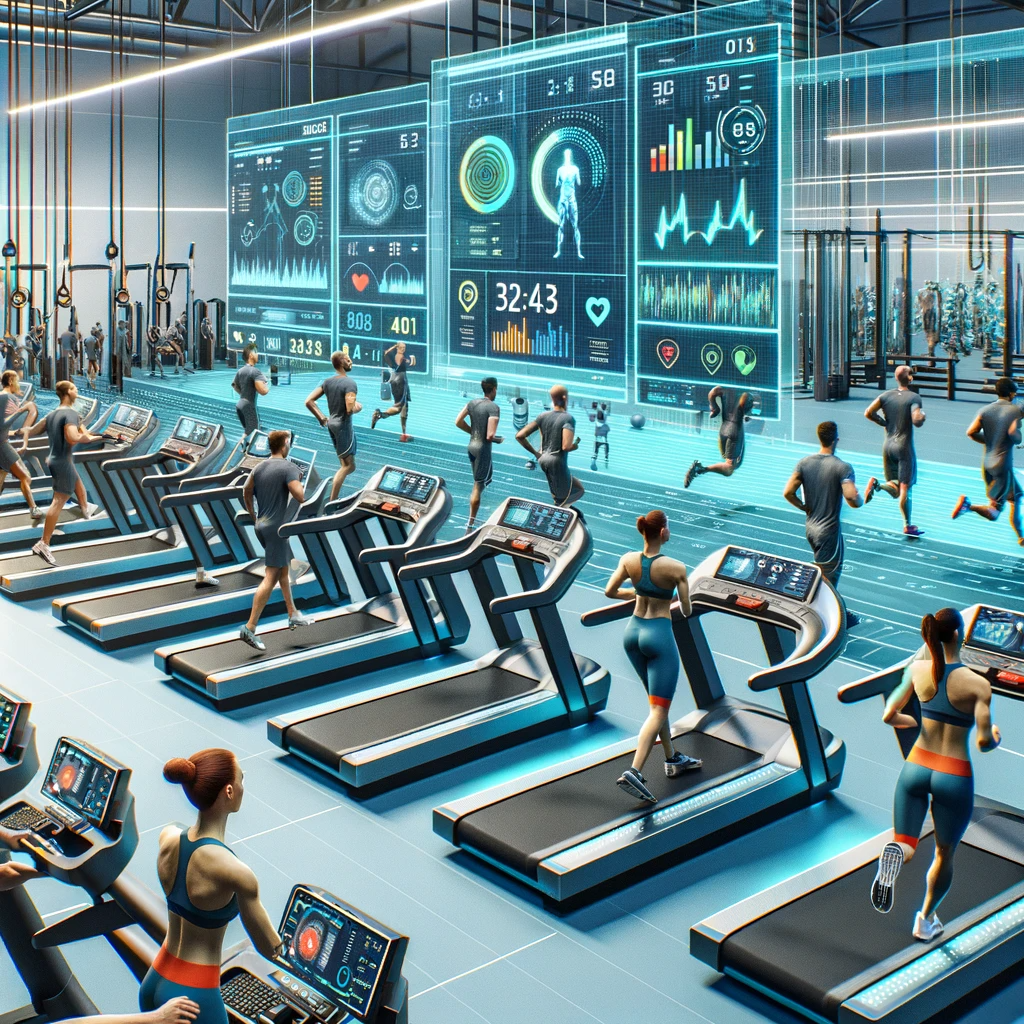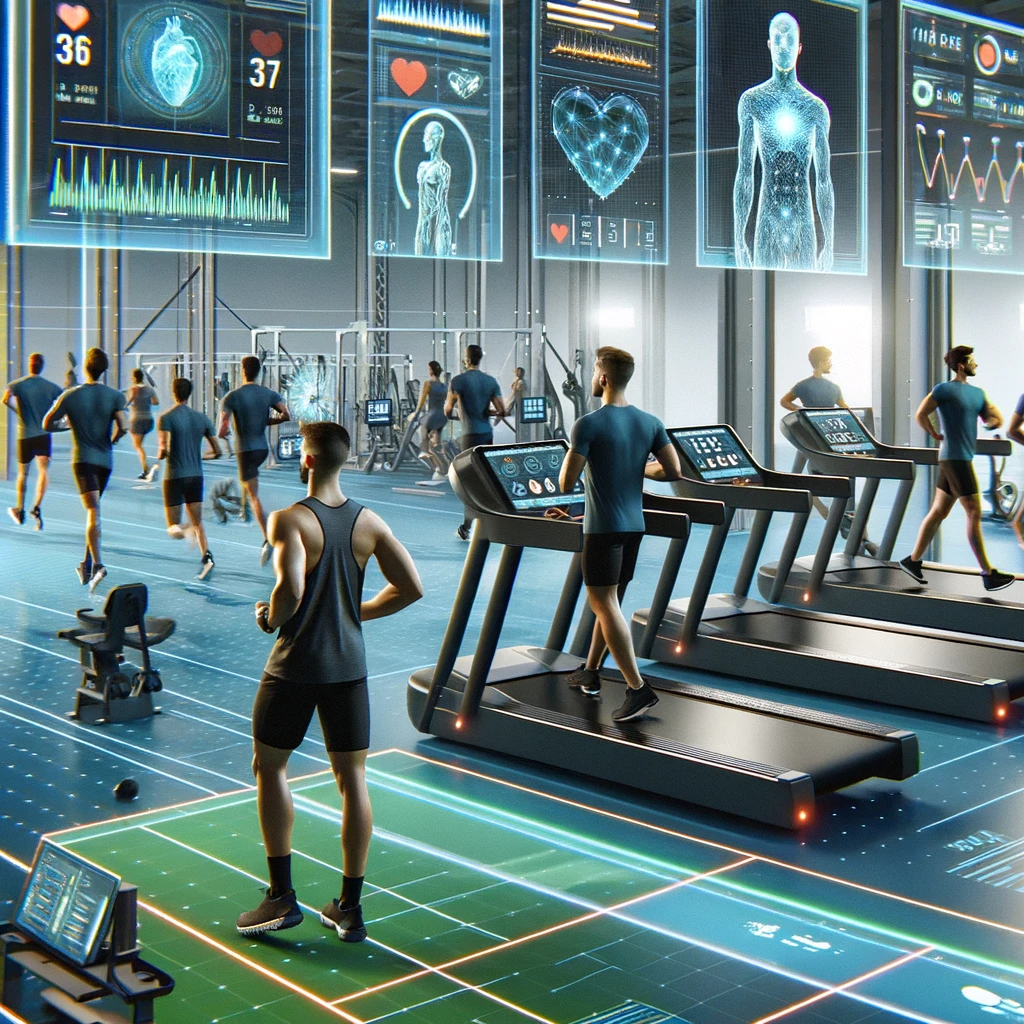In the high-stakes arena of professional sports, where every inch, every millisecond, and every decision can make the difference between victory and defeat, the quest for excellence is relentless. Athletes, coaches, and teams have always sought ways to gain a competitive edge, and in the digital age, a new ally has emerged – Artificial Intelligence (AI). The question that reverberates through the world of professional sports today is whether AI can truly improve athlete performance and elevate the game to unprecedented heights.
AI, with its capacity to analyze vast datasets and extract meaningful insights, has entered the sports arena as a game-changer. It has redefined the way athlete data is collected, processed, and utilized, opening new frontiers in performance optimization and injury prevention. From enhancing training regimens to predicting injuries before they occur, AI is transforming the very fabric of professional sports.
This article embarks on a journey to delve deep into the impact of AI on athlete performance in professional sports. It explores how AI’s data-driven prowess is revolutionizing the way athletes train, compete, and recover. From the evolution of data analytics in sports to real-world examples of AI’s influence, we will uncover the transformative power of technology in the world of sports.
The data-driven revolution in sports has seen the emergence of AI as a critical player. Athlete performance optimization and injury prevention, two cornerstones of modern sports, have been greatly influenced by AI’s capabilities. AI analyzes biomechanics, physiology, and performance metrics to provide insights that shape training regimens, refine technique, and accelerate recovery.
Moreover, AI extends its reach beyond individual athletes. It aids coaches and teams in strategic decision-making, offering insights into opponent analysis and game tactics. The very essence of sports, where split-second decisions matter, is being reshaped by AI’s predictive prowess.
Yet, as AI integrates itself deeper into the world of sports, ethical considerations and privacy concerns come to the forefront. Issues related to data security, athlete consent, and the fine line between augmentation and dependence on technology need careful deliberation.
In this article, we will navigate the transformative journey of AI in professional sports, from its data-driven inception to its potential to redefine how athletes and teams excel. We will also address the ethical and privacy considerations that accompany this technological revolution. As we journey through the AI-infused landscape of professional sports, the question lingers – can AI truly improve athlete performance? The answer, as we shall discover, is not just a resounding yes; it is a resounding yes with a future brimming with promise and potential.
The Data-Driven Revolution in Sports
In the annals of professional sports, data has always played a pivotal role. Coaches and teams have meticulously collected statistics, pored over game footage, and relied on their expertise to make crucial decisions. However, the landscape of sports analytics has undergone a seismic shift in recent years. It’s not just about numbers on a page or a coach’s gut feeling anymore. Data analytics, driven by technology and AI, has become a cornerstone of modern sports.
The journey began with basic statistics, tracking goals scored, passes completed, and shooting percentages. But as technology advanced, so did the complexity of the data at hand. The introduction of advanced metrics and player tracking systems gave rise to a wealth of information that was previously unimaginable. Every move, every heartbeat, and every step on the field could now be quantified, analyzed, and turned into actionable insights.
This influx of data fundamentally changed the way sports are played and understood. Coaches and teams no longer rely solely on intuition; they turn to data-driven decision-making. The quest for an edge over the competition led to the creation of dedicated analytics departments within sports organizations. These departments are staffed with data scientists, analysts, and technologists who sift through terabytes of data to find the golden nuggets that can propel a team to victory.

AI’s Entry into the Sports Arena
As the data-driven revolution gained momentum, Artificial Intelligence (AI) emerged as the next logical step. AI, with its ability to process and analyze vast datasets with lightning speed, became the catalyst for change in professional sports. The adoption of AI in the sports arena was not just a trend; it was a necessity.
AI’s arrival in sports brought with it a paradigm shift. It wasn’t merely about collecting more data; it was about understanding the data at a deeper level. Machine learning algorithms could identify patterns, uncover trends, and predict outcomes with unprecedented accuracy. AI became the driving force behind sports analytics, transforming how athlete data was utilized.
In the realm of athlete performance, AI’s impact was felt across the board. From analyzing biomechanics to monitoring physiological responses, AI offered insights that were previously inaccessible. Training regimens, once based on experience and intuition, could now be fine-tuned with data-backed precision. The era of trial and error in sports was giving way to data-driven optimization.
Performance Optimization with AI
AI’s foray into athlete performance optimization was nothing short of revolutionary. By analyzing a multitude of variables – from an athlete’s heart rate to the angles of joint movement – AI could provide real-time feedback and suggestions. This level of granularity transformed how athletes trained and refined their techniques.
For instance, in sports like golf, AI algorithms analyze every aspect of a player’s swing, from the angle of the clubhead to the speed of the follow-through. This data is then used to pinpoint areas for improvement. Similarly, in track and field, AI can break down a sprinter’s stride, identifying inefficiencies and recommending adjustments.
In team sports, AI helps coaches tailor training regimens to individual players. It considers each athlete’s strengths, weaknesses, and injury history to create personalized programs. Moreover, AI assists in monitoring athlete workload, preventing overtraining, and ensuring peak performance during crucial games.
Injury Prevention and Health Monitoring
In the world of professional sports, injuries can be career-defining moments. The line between success and setback can be as thin as a torn ligament or a strained muscle. This is where AI steps in as a guardian of athlete health.
AI’s capacity for predictive analytics has been harnessed for injury prevention. Machine learning models analyze athlete data to identify patterns that may lead to injuries. For example, AI can detect subtle changes in an athlete’s gait that might indicate an impending injury. By flagging these warning signs, teams can intervene early, potentially saving an athlete’s season or career.
Wearable technology, integrated with AI, has become a staple in sports. Athletes don devices that track everything from heart rate to sleep patterns. These wearables provide real-time data, allowing teams to monitor an athlete’s condition and make informed decisions. Whether it’s detecting signs of fatigue or ensuring proper recovery, AI-backed wearables are invaluable tools in the modern athlete’s arsenal.
In the following sections, we will delve deeper into how AI transforms athlete training, optimizes performance, and aids in injury prevention. We will also explore AI’s role in game strategy and tactical analysis, as well as the ethical considerations and privacy concerns that accompany this technological revolution in professional sports. As we journey through this transformative landscape, one thing becomes evident – AI is not just improving athlete performance; it’s rewriting the rules of the game.
AI in Game Strategy and Tactical Analysis
The impact of AI in professional sports isn’t confined to athlete training and injury prevention; it extends to the very heart of the games themselves. In this section, we’ll explore how AI is revolutionizing game strategy and tactical analysis.
AI’s role in sports strategy is akin to having an extra coach—one who never tires, never misses a detail, and has an encyclopedic knowledge of past games. Machine learning algorithms analyze vast archives of game footage, discerning patterns and trends that may elude human observers. This wealth of data allows teams to develop comprehensive game plans and strategies.
For example, in soccer, AI can analyze an opponent’s previous matches to identify recurring formations and playing styles. Armed with this knowledge, coaches can devise strategies to exploit weaknesses or counter specific tactics. In American football, AI can predict the likelihood of a play’s success based on historical data, helping coaches make informed decisions on whether to go for a pass or a run.
Moreover, AI’s predictive capabilities extend to in-game scenarios. By continuously analyzing real-time data, such as player positions and ball trajectory, AI can offer instant insights. This aids coaches in making split-second decisions, such as substitutions or tactical adjustments, that can change the course of a game.
The Ethical and Privacy Considerations
While AI’s influence in professional sports is undeniably transformative, it also raises ethical considerations and privacy concerns that merit careful examination.
One of the primary ethical concerns is the potential for overreliance on AI. Coaches and teams may become so dependent on AI-generated insights that they neglect their own expertise and intuition. Striking the right balance between AI-driven decision-making and human judgment is essential to maintain the integrity of the sport.
Privacy issues also loom large in the era of AI in sports. Athlete data, from performance metrics to health records, is now digitized and stored in vast databases. Ensuring the security of this data and obtaining informed consent from athletes for its use are paramount. Unauthorized access or data breaches can have far-reaching consequences, both for athletes and the organizations they represent.
Additionally, there is a concern that the relentless pursuit of data-driven success may compromise athlete well-being. Pushing athletes to their physical limits based on AI recommendations may lead to burnout and injuries. Balancing performance optimization with athlete health and longevity is a critical ethical consideration.

The Future of AI in Professional Sports
As we look to the future, AI’s role in professional sports is poised to grow even further. The technology is continuously evolving, and its applications in sports are expanding at a rapid pace.
AI’s predictive capabilities will become more nuanced, offering coaches and teams deeper insights into game scenarios and player performances. Wearable technology will become even more integrated, providing real-time data streams that facilitate immediate decision-making.
Moreover, AI’s influence will extend beyond the game itself. It will shape how sports are broadcast and consumed by fans. AI-powered camera systems can capture the most critical moments of a game, ensuring viewers never miss a highlight. Personalized content recommendations will keep fans engaged, delivering tailored insights and replays.
AI may also democratize sports analytics, making data-driven insights accessible to amateur and youth sports. Athletes at all levels may benefit from AI-driven training programs, injury prevention strategies, and performance optimization tools.
In conclusion, the integration of AI in professional sports is a transformative journey that touches every facet of the game. From athlete training to injury prevention, game strategies to ethical considerations, AI is reshaping how we perceive and participate in sports. As we embrace this AI-infused landscape, we must navigate the ethical challenges and privacy concerns while recognizing the boundless potential AI holds for the future of professional sports.
